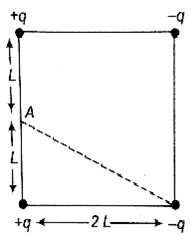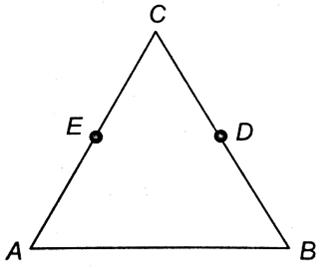CBSE Multiple Choice Questions
Multiple Choice QuestionsFour electric charge +q, +q, -q and -q are placed at the corners of a square of side 2L (see figure). The electric potential at point A, mid-way between the two charges + q and +q, is



zero
zero
A parallel-plate air capacitor has capacity C, a distance of separation between plates is d a potential difference V is applied between the plates. Force of attraction between the plates of the parallel plate air capacitor is




A series R -C circuit is connected to an alternating voltage source. Consider tow situations:
1. When the capacitor is air filled.
2. When the capacitor is mica filled.
Current through resistor is i and voltage across capacitor is V then
Va < Vb
Va > Vb
ia >ib
ia >ib
The electric potential V at any point (x, y,z), all in meters in space is given by V= 4x2 volt. The electric field at the point (1,0,2) in volt/meter is
8 along positive X-axis
16 along negative x- axis
16 along positive X- axis
16 along positive X- axis
Three charges, each +q, are placed at the corner of an isosceles triangle ABC of sides BC and AC, 2a. D and E are the midpoints of BC and CA. The work done in taking a charge Q from D to E is.
![]()
![]()
zero
zero
Two positive ions, each carrying a charge q, are separated by a distance d. If F is the force of repulsion between the ions, the number of electrons missing from each ion will be (e being the charge on an electron)




A series combination of n1 capacitors, each of value of C1, is charged by a source of potential difference 4V. When another parallel combination of n2 capacitors, each of value C2, is charged by a source of potential difference V, it has the same (total) energy stored in it, as the first combination has. The value of C2, in terms of C1, is then




Two parallel metal plates having charges +Q and -Q faces each other at a certain distance between them. If the plates are now dipped in kerosene oil tank, the electric field between the plates will
become zero
increase
decrease
decrease
Three capacitors each of capacitance C and of breakdown voltage V are joined in series. The capacitance and breakdown voltage of the combination will be
C/3, V/3
3C, V/3
C/3, 3V
C/3, 3V
The electric potential at a point in free space due to a charge Q coulomb is Q x 1011 V. The electric field at that point is





